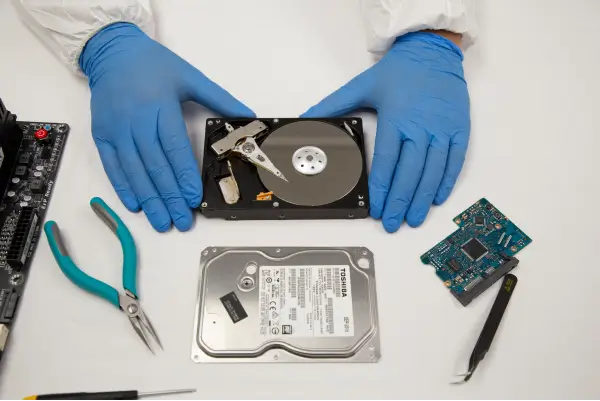One of the security features of our hardware encrypted drives is brute-force anti-hacking technology to protect unauthorized parties from accessing your information. But what exactly does brute force hacking mean and what is the process that hackers use to “brute force” a device? This, unfortunately, is a common type of attack involving passwords on a media device. This post will outline what a brute force attack is, how it is executed, and why having a defense mechanism against it is vital for protecting your information.
What Is A Brute Force Hack?
A brute force hack occurs when a malicious actor attempts to guess possible combinations of a password until they find the correct answer to access a system. It is classified as “brute force” because a hacker will use excessive force to break into someone’s account. If the password they are trying to guess is more complex, it will take more time and effort to attempt to guess all the possible combinations and hope they are correct.
The goal of a brute force attack is so the hackers can obtain personal information like passwords, banking information, and other credentials that can be sold on the dark web. Hackers may also perform this attack in order to sharpen their skills and prove that they can steal data or spread malware through the device. In other cases, they may deface and ruin websites or other information relating to a company in order to decrease business and ruin their reputation.
How Do Hackers Perform A Brute Force Hack?
The process behind a hack is not overly complicated as most attackers will just try a combination of letters and numbers to generate the password that will grant them access. A complex or lengthy password will require more time and effort on the part of the attacker, and they do not want to spend inordinate amounts of time on a hack, so they will move on if the hack can’t be done efficiently.
There is a combination of ways that a brute force hack can be done, and sometimes using one password against multiple user names can grant them access to at least one website or account. Some of the tools used to do this include:
- Aircrack-ng–wireless tool that performs attacks on a wireless network by using a predetermined dictionary of potential passwords. It is free and downloadable for most platforms.
- John the Ripper–automatically detects the type of hashing used in a password and can perform brute force attacks with the majority of possible passwords.
- Rainbow Crack–a table of passwords is created during the attack and is pre-computed to reduce time.
Hackers may use a standard attack of guessing your password manually, a dictionary attack where a list of words is used as potential passwords or credential stuffing in which a username and password are used to break into multiple sites and devices.
Protecting Yourself from a Brute Force Disaster
Of course, the easiest thing to do to protect yourself from these attacks is to use complex and lengthy passwords for your accounts and not to use the same credentials for multiple sites. You can also remove any unused accounts so a hacker can’t access your active information by using an old login that is still tied to a social media account or email address.
Some of the other physical ways to protect against brute force attacks are through 2-factor authentication and brute force anti-hacking. Our line of hardware encrypted SecureDrives are designed with brute force anti-hacking, meaning that if a hacker tries to gain access to your drive, the information will be crypto-erased after 10 consecutive failed PIN entries. The BT model also allows for 2-factor authentication for added security.
Passwords are some of the weakest links in technology and our drives require unique and complex passwords to be used to protect your data.
















